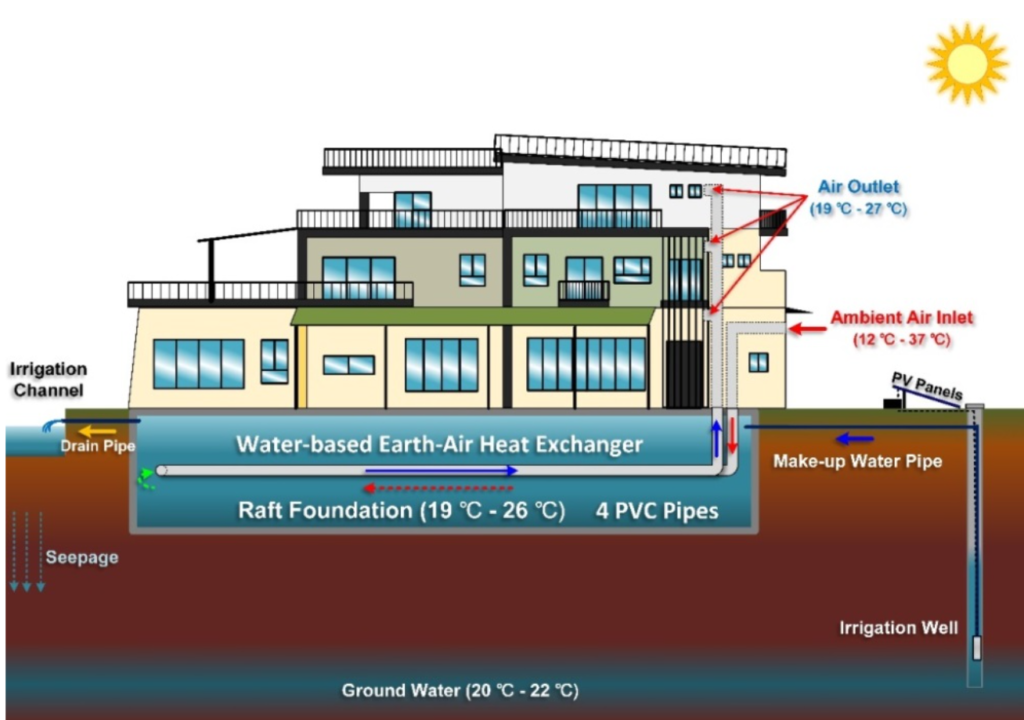Foundation-Integrated Water-Based Earth-Air Heat Exchanger (FIWEAHE) System

2015-2017
Context
The global demand for sustainable and energy-efficient building systems is driving innovation in heating, ventilation, and air conditioning (HVAC) technologies. In regions with humid and variable climates, there is a pressing need for HVAC systems that reduce energy consumption and carbon emissions while maintaining indoor comfort. Traditional HVAC systems often rely heavily on non-renewable energy sources, contributing to environmental degradation. To address these challenges, this project proposes a novel approach that leverages geothermal energy through a foundation-integrated water-based earth-air heat exchanger system. By utilizing the thermal properties of groundwater, the system aims to optimize HVAC operations in residential buildings, enhancing sustainability and energy efficiency.
Content
We implemented a foundation-integrated water-based earth-air heat exchanger system to optimize HVAC operations in residential buildings. The system uses groundwater to precondition outdoor air, significantly reducing energy consumption and carbon emissions. Key features include:
- Groundwater Utilization: A solar-powered pump circulates groundwater into the building’s foundation, enhancing thermal capacity and acting as a thermal storage system.
- Heat Exchange Integration: Pipes immersed in the foundation water exchange heat with incoming air, preconditioning it before it enters the building.
- Energy Efficiency: The preconditioned air maintains indoor comfort with reduced energy usage, leveraging stable groundwater temperatures.
- Environmental Sustainability: The system provides water for irrigation and allows recharged groundwater to return to the aquifer, promoting environmental stewardship.
This innovative system operates efficiently without thermal saturation issues, enhancing long-term performance.
Conclusion
The foundation-integrated water-based earth-air heat exchanger system offers a pioneering solution for sustainable HVAC operations in residential buildings. By harnessing groundwater for air preconditioning and thermal storage, the system significantly reduces energy consumption and carbon emissions while ensuring efficient thermal management and indoor comfort. The comprehensive design, incorporating renewable energy sources and innovative thermal technologies, not only meets the HVAC needs of residential buildings but also promotes environmental stewardship through effective groundwater use and aquifer recharge. This approach exemplifies an advanced, eco-friendly solution for modern building design, setting a new benchmark for future HVAC systems and contributing to global sustainability efforts.